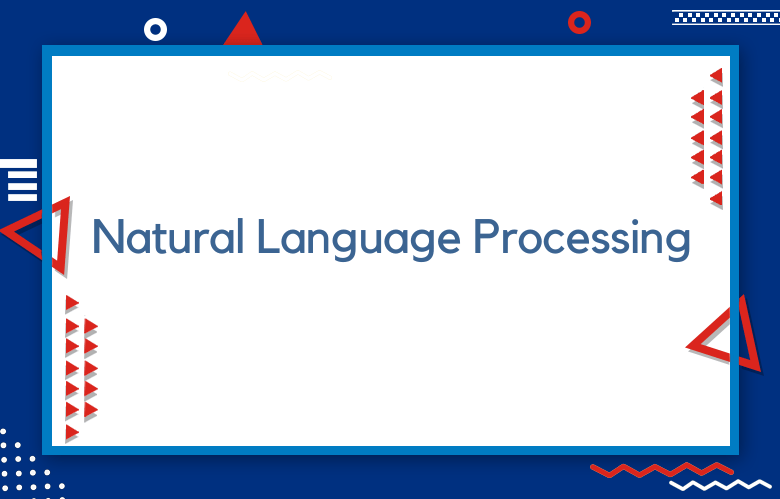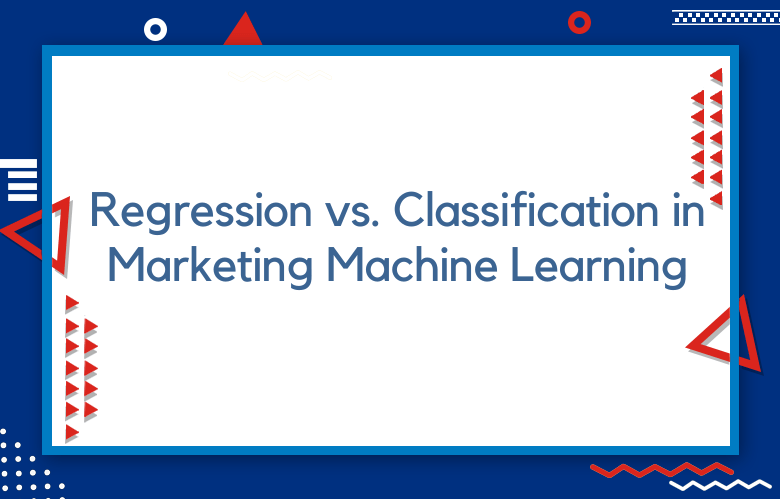How to use Natural Language Processing for Marketing Analytics

Natural language processing (NLP) is a subfield of computer science, artificial intelligence, and linguistics concerned with the interactions between computers and human languages, as NLP is related to the area of human-computer interaction.
In business, NLP is used in customer service, market research, and sentiment analysis applications. NLP can analyze social media posts, campaign speeches, and debate transcripts for political campaigns.
We’ll focus on how NLP can be used for marketing analytics in political campaigns. We’ll cover the basics of NLP and explore how it can be used to gain insights into voter behavior. By understanding how NLP works, you’ll be better able to use data-driven marketing techniques in your political campaigns.
What is Natural Language Processing (NLP)?
Natural Language Processing (NLP) is a field of computer science and artificial intelligence that deals with the interaction between computers and human (natural) languages. In practical terms, NLP developers strive to build systems that automatically understand and respond to human language inputs, regardless of the form they receive (e.g., text, speech, or sign language).
Some standard applications of NLP include automatic summarization, machine translation, named entity recognition, and question-answering. Despite its many successes, NLP remains an active area of research due to the challenges posed by human language’s vast heterogeneity and ambiguity.
Natural language processing (NLP) is a branch of artificial intelligence that deals with the interactions between computers and human (natural) languages, mainly how to program computers to process and analyze large amounts of natural language data.
NLP builds applications such as machine translation, spell-checking, text classification, topic segmentation, and sentiment analysis. It operates in automatic summarization, question-answering, and information extraction. To work with natural language data, we must perform several tasks, such as text preprocessing, tokenization, part-of-speech tagging, named entity recognition, parsing, and document similarity.
Natural language processing is interdisciplinary, drawing on knowledge from linguistics, computer science, mathematics, and psychology.
At its core, natural language processing (NLP) is about teaching computers to understand human language. It is no simple task because human language is incredibly complex. Take the sentence “The dog chased the cat up the tree,” for example. This simple sentence contains many concepts a computer needs to understand to process properly: dogs, cats, trees, chasing, etc.
NLP is an artificial intelligence branch that analyzes, understands, and generates human language. Computers can’t just read or listen to human language as they can with other forms of data; they need to interpret it to extract meaning from it. This interpretation process is only sometimes straightforward because human language is often ambiguous and constantly changing.
For example, “bull” can refer to an animal or an investor who believes a stock will go up. Context is critical when it comes to understanding human language.
NLP is a subfield of artificial intelligence that deals with the interaction between computers and humans using natural language. NLP algorithms process and analyze large amounts of unstructured data (such as text). Specific applications of NLP include speech recognition, machine translation, and sentiment analysis.
How to use Natural Language Processing for Marketing Analytics
One way NLP can be used for marketing analytics is through sentiment analysis. Sentiment analysis involves automatically identifying and extracting opinions from text data. This information can be precious for businesses, as it can help them track customer sentiment over time and make informed decisions about product development, advertising, and more.
NLP can also be used to create better content. For example, marketers can use NLP algorithms to generate headlines or summaries of articles automatically. Additionally, NLP can target ads more effectively by extracting customer interest information from social media data.
NLP can improve customer service. For example, NLP chatbots can understand customer queries and provide accurate real-time responses. Additionally, businesses can use NLP to monitor social media for negative sentiment about their brand and take steps to address any issues that arise.
NLP can be used for various marketing analytics applications in political campaigns. Here are just a few examples:
Analyzing social media posts
Social media like Twitter and Facebook are a goldmine of data for political campaigns. NLP can analyze this data to gain insights into what voters say about the candidates and the issues. Can they use this information to refine campaign messaging and strategies?
Extracting insights from campaign speeches
Campaign speeches are another rich data source that can be analyzed using NLP. By examining speech transcripts, campaigns can better understand what voters care about and how they feel about the candidates. Can use this information to inform campaign strategy and messaging.
Extraction of information from debates
Like with speeches, NLP can also be used to analyze debate transcripts. Using NLP, campaigns can identify which topics resonate with voters and which are falling flat. They can also track how voters’ perceptions of the candidates change after each debate performance.
Natural Language Processing (NLP) is a branch of artificial intelligence that deals with interactions between computers and human languages. In marketing, NLP can be used for various tasks, such as sentiment analysis, topic modeling, and brand monitoring.
Sentiment analysis decides whether a text is positive, negative, or neutral. It helps understand how customers feel about a product or service. Topic modeling is the process of automatically identifying groups of related words in a text.
It can be used to identify topics discussed in customer reviews. Brand monitoring is the process of tracking mentions of a brand online. It can also be used to track customer sentiment and identify potential issues.
NLP can be used to improve marketing campaign effectiveness and customer satisfaction. Marketers can adjust their campaigns by understanding customers’ feelings about a product or service.
Additionally, NLP can help identify potential issues with a product or service before they become problems. By using NLP for marketing analytics, businesses can gain insights that would otherwise be difficult to obtain.
Natural Language Processing (NLP) is an AI stream that deals with understanding and manipulating human language. In marketing, NLP can be used for various tasks, such as sentiment analysis, topic modeling, and keyphrase extraction.
Sentiment analysis is the process of determining the emotional state of a text, which can help gauge customer satisfaction or measure the success of a marketing campaign.
Topic modeling is a technique for uncovering the hidden structure in a collection of documents, which can be used to group similar pieces of content or to identify new areas of interest.
Key phrase extraction automatically identifies the essential phrases in a document. This information can generate taglines or create more targeted ad campaigns. By leveraging NLP, businesses can gain valuable insights into customer behavior and preferences.
Ways to Use Natural Language Processing for Marketing Analytics
Automated customer service
One of the popular applications of NLP is automated customer service, also known as chatbots. These computer programs simulate human conversation and are commonly used to provide customer support or answer product or service questions.
Sentiment analysis
Sentiment analysis is a process of determining the emotional tone of a piece of text. It can analyze customer reviews, social media posts, or text data. Sentiment analysis can be used to understand customer sentiment, track brand reputation, and more.
Text classification
Text classification is assigning a category or label to a piece of text. For example, a part of text could be classified as having a “positive” or “negative” sentiment. Text classification can be used for various tasks, such as spam detection, topic identification, and sentiment analysis.
Entity extraction
Entity extraction is identifying and extracting named entities from text data. Named entities include people, places, organizations, and products. Entity extraction can be used for information retrieval and question-answering tasks.
Summarization
Summarization is the process of creating a concise summary of a piece of text. Resumes can be generated automatically or manually (by humans). Automatic summarization algorithms often use NLP techniques like sentence extraction and text classification.
Keyword extraction
Keyword extraction is the process of automatically identifying the most critical keywords in a piece of text. Keywords can determine a document’s topic, improve search engine optimization (SEO), or create targeted marketing campaigns.
Language detection
Language detection is identifying the language in which a text is written. It can be used for machine translation and moderation tasks (ensuring user-generated content is appropriate for all audiences).
Topic modeling
Topic modeling is the process of automatically identifying the topics present in a collection of documents. It can organize documents, improve information retrieval, or generate targeted marketing campaigns.
Brand Monitoring
Brand monitoring involves tracking and analyzing a brand’s mentions online. NLP can automate this process by identifying all words associated with a brand and then categorizing them by sentiment. This information can help understand customers’ feelings about the brand and identify potential issues.
Competitor Analysis
Competitor analysis compares one company’s products or services to those of its competitors. NLP can automate this process by extracting data from competitor websites and analyzing it to identify areas where the company has an advantage or disadvantage. This information can then be used for strategic product development and marketing decisions.
Lead Scoring
Lead scoring involves assigning a numeric score to each piece of information to prioritize them based on their likelihood of converting into a paying customer. NLP can automate this process by extracting data from lead profiles and then calculating a score for each lead. Sales teams can then use this information to prioritize their efforts.
Market Research
Market research involves gathering data about consumers to understand their needs and wants. NLP can automate this process by extracting data from social media posts, surveys, and customer reviews. This information can then be used for strategic product development and marketing decisions.
Social Media Sentiment Analysis
Social media sentiment analysis is another popular application of natural language processing. It involves using computer programs to analyze large amounts of social media data to identify patterns and trends in people’s feelings about a particular topic or brand. Businesses can use this information to make marketing and product decisions.
Text Summarization
Text summarization is a process of automatically generating a summary of a longer text document. It can be helpful for quickly extracting the main points from a large document such as a research paper or news article.
Topic Modeling
Topic modeling is a process of automatically identifying the topics present in a text document. It can be used to organize an extensive collection of documents or to identify the main issues discussed in a text.
Named Entity Recognition
Named entity recognition automatically identifies and classifies named entities in a text document. Named entities include people, places, organizations, and events. This information can be used to extract meaning from unstructured text data.
Social Media Monitoring
Natural language processing can also monitor social media platforms for marketing purposes. Companies can gain insights into customer sentiment, product preferences, and even purchasing behavior by analyzing social media posts. We can then use this information to improve marketing strategies and target potential customers.
Ad Targeting
Another common application of natural language processing is ad targeting. By analyzing a user’s online activity, companies can identify the topics they are interested in and serve relevant ads. This helps ensure that users only see ads for products or services they are interested in, which can improve click-through and conversion rates.
Entity Extraction
Entity extraction is identifying and extracting named entities from a text document. Named entities include people, places, organizations, and events. This information can generate leads or track mentions of a company or brand online.
Topic Modeling
Topic modeling is a process of automatically identifying the topics present in a text document. This information can be used to determine which issues are being discussed most frequently online or identify potential trends in customer behavior.
Chatbots
Chatbots are another common application of natural language processing. They are computer programs that are designed to simulate human conversation. They are used more as a form of customer service and marketing, such as providing information about products or services or promoting special offers.
Voice Search Optimization
As voice search becomes more popular, businesses need to optimize their content for voice search. Natural language processing can analyze voice search queries to identify their intent. We can then use this information to ensure that content will satisfy those queries.
Generating Insights from Text Data
Text data is often unstructured and difficult to analyze. Natural language processing can extract insights from text data such as customer reviews or survey responses. This information can be used to improve products or services or make other business decisions.
Personalized Recommendations
It can also use Natural language processing for personalized recommendations. By analyzing past behavior, natural language processing can identify patterns and make recommendations based on those patterns. For example, if a customer has previously bought items A and B, a recommender system may suggest item C based on the assumption that the customer would also like it.
Predictive Analytics
Predictive analytics is another area where natural language processing can be helpful. We can create predictive models to provide insights into future trends or events by analyzing past data. Businesses can then use this information to make better decisions about pricing, inventory, or marketing campaigns.
Market Segmentation
Market segmentation is another way that NLP can be used for marketing analytics. By understanding the preferences and interests of different groups of customers, businesses can segment the market and target specific groups with tailored messages. This can improve the effectiveness of marketing campaigns and ensure that resources are used efficiently.
Improve customer segmentation
Natural language processing can improve customer segmentation by identifying patterns in customer feedback. This information can create more accurate segments, targeting specific marketing messages.
Automate customer support
Natural language processing can automate customer support by identifying common customer queries and providing automated responses. It can reduce the time spent on customer support, freeing up resources for other tasks.
Analyze social media data.
Natural language processing can analyze social media data to identify trends and Sentiment analysis. This information can create more effective marketing campaigns and improve customer engagement.
Generate targeted content
Natural language processing can generate targeted content by analyzing the interests of a target audience. This information can be used to create content that is more likely to resonate with the target audience, increasing the chances of conversion.
Monitor brand reputation
Natural language processing can monitor brand reputation by tracking company or product mentions across the web. This information can be used to identify potential problems and take steps to reduce any adverse effects on the brand.
Improve lead scoring
Natural language processing can improve lead scoring by identifying customer feedback and behavior patterns. This information can be used to score leads more accurately, helping sales teams prioritize their efforts.
Identify influencers
Natural language processing can identify influencers by analyzing social media data and identifying those with a large following frequently mentioning a company or product. This information can create relationships with these influencers and promote the brand through them.
Automate market research
Natural language processing can automate market research by extracting data from news articles, blog posts, and social media posts. We can then analyze This information to identify trends and gain insights into the market.
Improve Customer Segmentation
One way that natural language processing can be used for marketing analytics is to improve customer segmentation. Segmentation is dividing a customer base into groups based on shared characteristics. NLP can analyze customer feedback to identify critical elements that can be used for segmentation purposes.
Automate Social Media Monitoring
Another way NLP can be used for marketing analytics is by automating social media monitoring. Social media monitoring tracks and analyzes online conversations to gain insights about a brand or product. NLP can automatically track and analyze social media conversations, which can help marketers quickly identify issues or trends.
Generate Insights from Customer Feedback
NLP can also generate insights from customer feedback, which is any information customers provide about their experience with a product or service. NLP can analyze customer feedback to identify trends or issues that must be addressed.
Improve Email Marketing
We can also use NLP to improve email marketing. Email marketing is the process of sending promotional messages to customers via email. NLP can analyze customer behavior to identify patterns that can be used to improve email marketing campaigns.
Automate Market Research
Another way NLP can be used for marketing analytics is by automating market research. Market research gathers information about a target market to make better business decisions. NLP can automatically collect and analyze data about a target market, which can help marketers save time and money on market research projects.
Identify Influencers
NLP can also be used to identify influencers. Influencers are people who can influence others’ purchasing decisions. NLP can analyze social media conversations to identify influential people about a particular topic.
Named Entity Recognition
Named entity recognition (NER) is identifying proper nouns in a text. It can extract information from unstructured data, such as customer reviews or social media posts.
Part-of-Speech Tagging
Part-of-speech tagging (POS) assigns tags to each word in a text. It can be used to improve the accuracy of NLP algorithms and create more sophisticated models for tasks such as sentiment analysis and topic modeling.
Word Embeddings
Word embeddings are mathematical representations of words that capture the relationships between them. They can be used to improve the accuracy of NLP algorithms and create more realistic models for tasks like machine translation and question answering.
Neural Machine Translation
Neural machine translation (NMT) is the translation of text from one language to another using artificial neural networks. It can improve the quality of machine translation systems and create more natural-sounding translations.
Conclusion
NLP is a powerful tool for marketing analytics in political campaigns. Understanding how NLP works and some of its uses will better equip you to use data-driven marketing techniques in your campaigns.
NLP is a powerful tool for various marketing tasks, such as sentiment analysis, content creation, and customer service. By understanding how NLP works and utilizing it correctly, businesses can gain a competitive edge in the ever-evolving field of marketing analytics.
Natural Language Processing can help you understand customer sentiment, extract insights from unstructured data, and automate repetitive tasks. Its applications in marketing analytics are vast and varied – from social media monitoring to text classification and predictive modeling.
If you want help incorporating NLP into your marketing analytics strategy, we offer consulting services to get you started. Our team of experts in Natural Language Processing can provide the guidance and support you need to make the most of this powerful tool.
Contact us today to learn how to take your marketing analytics to the next level with NLP.
Call: +91 9848321284
Email: [email protected]



